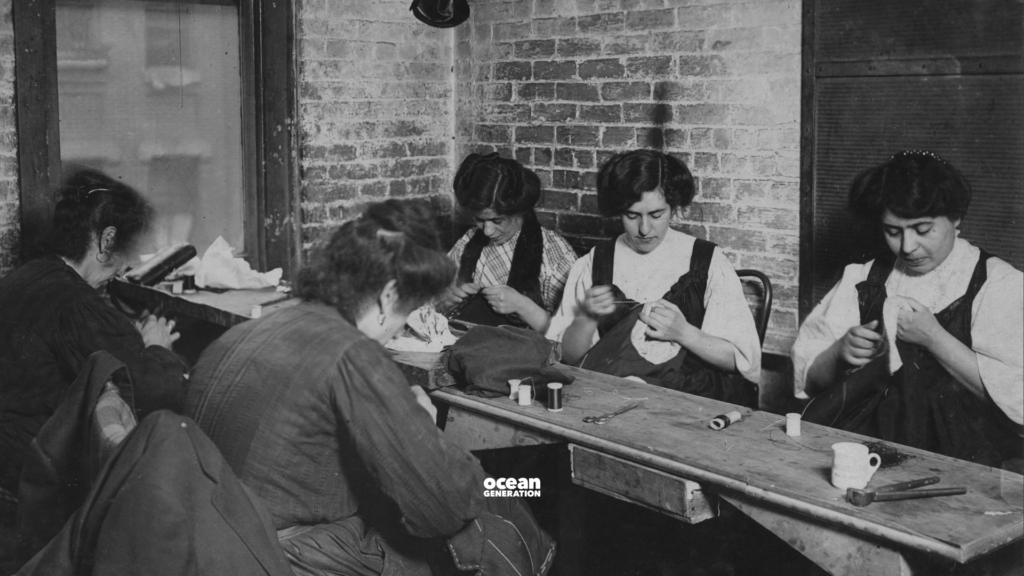Fast fashion, a term describing the rapid production of high volumes of clothing at low costs, has transformed the fashion industry into a fast-paced cycle of consumption and disposal. The concept first emerged in the late 20th century but is deeply rooted in historical contexts beginning with World War II. During this time, economic constraints forced a merging of high design with utilitarian materials, seeding ideas that would later blossom into what we now recognize as fast fashion.
Fast fashion brands rapidly reproduce runway trends at low prices, allowing for mass consumption. The appeal lies in the ability to purchase trendy clothing that seems both fashionable and affordable. Major retailers like Zara and H&M have pioneered this model, offering chic styles that reflect high-fashion designs within weeks of their appearance on the runway.

Timeline infographic showcasing the history of fast fashion.
Source: SANVT
As fast fashion gained momentum, its growth escalated with advancing technology and globalization. The advent of the internet and social media platforms allowed brands to reach a wider audience, making it easier for consumers to access and purchase trendy items quickly. Online shopping and marketing have made fast fashion even more prevalent, as shoppers can find styles instantly without geographical limitations.
However, this model isn’t without consequences. The rise of fast fashion has significant environmental impacts, with the fast production and quick disposal of clothes leading to excessive waste. The fashion industry is known to be a major contributor to pollution, not just through textile waste but also water pollution caused by dyes and chemical processes in manufacturing. Additionally, the production of cheap clothing often occurs under exploitative labor conditions in countries with lax labor laws.

An image that symbolizes the impact of fast fashion on the environment.
Source: Ocean Generation
The environmental strain continues to prompt global conversations on sustainability and led to movements advocating for slow fashion. The slow fashion approach prioritizes quality over quantity, emphasizing ethical production practices that reduce environmental harm. This philosophy seeks to engage consumers in making more mindful choices about their purchases, encouraging longer-lasting quality over fleeting trends.
The distinct shift towards sustainability indicates a growing awareness among consumers about the impact of their choices. As the industry evolves, various brands have started adopting eco-friendly materials and practices, including recycling and upcycling initiatives that focus on reducing waste.

An illustration highlighting the contrast between fast and ethical fashion.
Source: FORÇ Magazine
In conclusion, the rise of fast fashion epitomizes modern capitalism’s complexities, combining consumer desires for affordable fashion with pressing environmental and ethical concerns. As consumers become increasingly aware of the true cost of their fashion choices, the industry landscape will likely continue to shift towards sustainability, emphasizing a more responsible approach to consumption.